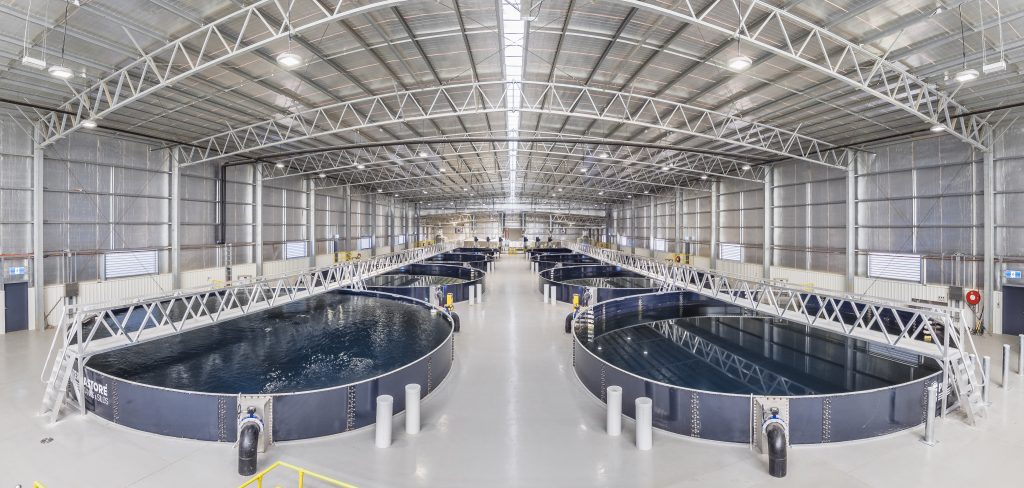
In 2018, I did a worldwide survey regarding energy usage in recirculating aquaculture systems (RAS), which showed the different types of energy sources the RAS industry used in the past. While only three years have gone by, things have changed quite a bit. We are in an era where technology is driving the industry but the COVID pandemic, which has already lasted for more than year and a half, has dramatically accelerated this situation. The worldwide lockdown in response, has pushed ‘work from home’ and online meetings now more than ever before.
We are all familiar with RAS: intensive fish production systems with reduced water and land use. We are also aware that their high energy requirement is a challenge, increasing operational costs, affecting both environmental impacts and economic costs, jeopardizing the farms’ sustainability. Recently, there has been a piqued focus on using renewable energy sources or waste heat from other industries as part of the solution to decrease environmental impacts, due to the use of fossil fuels. Nevertheless, this energy source to be employed in a particular farm is being dictated by the system’s location and accessibility.
The RAS industry is ‘immature’ compared to other protein farms which helps keep it in the public eye. The industry has been scrutinized more so than many others. This may be due to the failures experienced, but also because society is now more aware of how we produce what we eat. This has some pros and cons; the industry has always been looking for more efficient production technologies. That said, waste heat from other industries has been promoted as a source for RAS. According to the literature and market review made by Badiola et al. 2018, this type of heat source has been used worldwide for different fish/seafood species: commercial oyster, penaeid shrimp, salmon, American lobster, catfish, and more. Some other examples include eel and salmonid fingerlings production, which uses heat from power plants, while salmonid culture uses hydroelectric waste heat. Additionally, positive results have been obtained using waste heat from thermal electric or hydro-electric power stations. One study concluded that it could offer substantial energy and cost savings to salmon aquaculture in Canada.
What is something that society constantly uses? What is one of the newest additions to global infrastructure? What do we use 24 hours, 365 days each year? The answers are data and technology. At this point, anyone could guess what this main, heat releasing industry is: data centres. Heat recovery from data centres is an emerging trend that is encouraged and mandated by some government entities. Concepts such as energy reuse effectiveness allow data centres to extend the opportunity to the energy suppliers. Nordic countries are leading implementation of this new sustainability, with Stockholm, Sweden looking to use data centre waste to heat 10 per cent of the city by 2035.
What about taking advantage of them? Some investors are already watching for this, and there has been some news around this topic: Norwegian Lobster Farm, the world’s largest land-based trout farm. The common expectations are that both energy consumption and carbon footprint are significantly reduced, otherwise the energy produced by the mentioned data centres is released, wasted and lost. With the use of heat recovery technology, a fish farm will use this energy to ensure the correct fish culture temperature, with this water forwarded to the data centre afterwards. As one of the mentioned farm’s CEO pointed out, “This means that the system can be scaled-up in production, reducing technical risk, saving both CAPEX and OPEX, and gaining environmental benefits.”
This approach is important to a circular economy. A next step could be looking at how to link the technology and farmed fish. I believe this is a great opportunity. In fact, thanks to the data centre supported social media and internet, many fish producers have been able to sell much of their production during the pandemic crisis, and therefore, keeping their businesses alive.
Keep track of my next article and/or contact mbadiolamillate@gmail.com or mab@es.alpha-aqua.com for any further questions or discussion; a RAS lover willing to spread sustainability and efficiency approach among the industry.
Maddi Badiola, PhD, is a RAS engineer and PM, co-founder of HTH aquaMetrics LLC, (www.HTHaqua.com) and project leader & RAS specialist in Alpha Aqua A/S (www.alpha-aqua.com) based in Getxo, Basque Country, Spain. Her specialties include energy conservation, lifecycle assessments and RAS global sustainability assessments. Email her at mbadiolamillate@gmail.com, mab@es.alpha-aqua.com or contact her through LinkedIn, Facebook and Instagram.
Print this page
 Photo: JLH Consulting
Photo: JLH Consulting